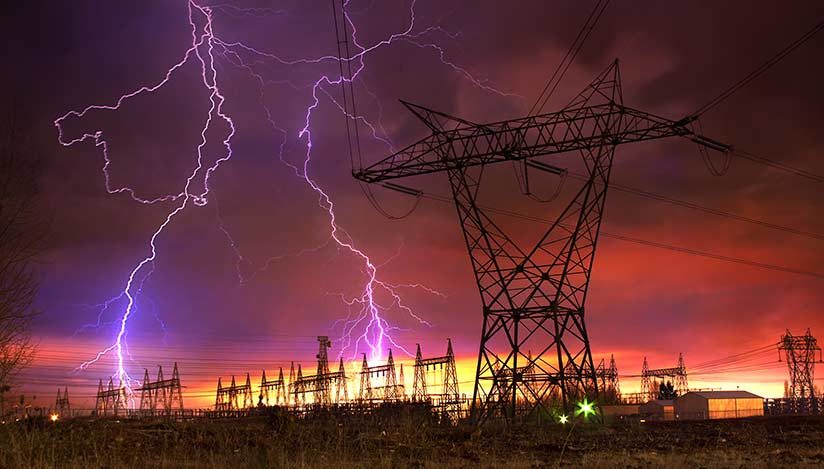SMUD Proposing ‘Grid Access Charge’ Costing Solar Customers $1000s
Update: On April 22, 2019, SMUD withdrew the Grid Access Charge proposal, which was the focus of this article. SMUD also withdrew their proposed Net Energy Metering (NEM) 2.0 rate schedule. SMUD has stated that they are committing to establishing a process where they can work with public stakeholders to find service solutions that best meet the needs of all involved. While the specific topic of this article is no longer relevant, we will leave it published, as there will almost certainly be other utilities in California and elsewhere in the United States that will make similar proposals in the future. Hopefully the discussion here will make it clear why solar-targeted rate structures of this type are so damaging to the growth of solar power, and the need to find alternative solutions.
In April 2019, SMUD rolled out a rate change proposal for its 630,000 residential and commercial customers. One aspect of the proposal impacts all customers:
- 4.75% per kWh rate increase in 2020
- 4.5% per kWh rate increase in 2021
While SMUD likes to tout having an average annual billing rate increase of 2.15% between 2013 and 2017, this proposal would significantly outstrip the combined average yearly rate increase of 1.48% SMUD lists for PG&E and the local utilities of Roseville, Modesto, and Turlock. By 2021, customers can expect to see their bills increase by a total of 9.5% over what they are paying in 2019. This means a homeowner currently paying an average of $200 per month will be paying $220 per month in 2021.
The proposal claims that SMUD’s average customer currently pays about $115 per month. They will experience a billing increase of $5.40 per month ($65/year), with a total increase of $10.80 per month ($130/year) the following year.
But more baffling are significantly greater proposed rate increases exclusive to residential and commercial customers with solar power systems.
SMUD’s proposal specifies a new “Grid Access Charge” to be applied to all customers installing new on-site solar power systems, based upon the power capacity of the system installed.
Upon initial implementation—scheduled for somewhere between January 1st and May 31st of 2020—residential customers would be charged $8 per kW of power capacity. For our customers, on average this would work out to a billing increase of about $40 per month, or $480 per year. But the fee will also increase over time, reaching $11 per kW by 2025.
Rate increases would also be applied to commercial and agricultural customers, with the 2020 rate increase varying between $4 and $8 per kW. This range would increase to $6.50 to $11 by 2025. Vote Solar, a nonprofit solar customer advocacy group, anticipates that SMUD’s commercial customers will be hit especially hard. In a statement issued by the organization, the Central Valley’s many agricultural businesses face estimated billing increases of $4,000 per month, or $48,000 per year.
Current solar customers would be exempted from the Grid Access Charge for a period of 10 to 20 years, depending on when they were connected to the SMUD energy grid.
The proposal put forth by SMUD specifies that solar customers who were connected to the SMUD grid won’t be affected by the Grid Access Charge until 20 years after the first billing period subsequent to the installation of their system. This means that if you had your solar power system installed in 2015 and your first bill after activation covered June 1st through 30th, you would be subject to the Grid Access Charge as of July 1st, 2035.
For customers whose systems were connected in 2018, or who submitted connection applications to SMUD prior to July 1st, 2019, the charge won’t apply until 10 years after the first billing period. This means if your first post-solar bill from SMUD covered June 1st through 30th of 2018, your rate increases start July 1st, 2028.
However, there are exemptions to this. If you move to a new home with solar panels installed during the exempt period, the exemption will not apply to you. In other words, the exemption only applies to a specific customer at a specific address. The grandfather clause is nullified if a person changes address, or a solar-equipped home is sold.
SMUD customers can make their feelings known by speaking at a series of workshops and hearings hosted by SMUD’s Board of Directors.
For obvious reasons, many consumer and solar advocacy organizations, as well as Capital City Solar and our loyal customers, view SMUD’s proposal as a targeted attack on the Sacramento region’s many solar power users. This is especially the case given that in September 2018, Governor Jerry Brown signed Senate Bill 100, a piece of legislation mandating that:
- 50% of California’s electricity be sourced from renewable sources by 2025
- 60% by 2030
- 100% by 2045
This is an extremely aggressive but achievable (and necessary) goal for the most populous and forward-looking state in the country. But it can only be achieved if California homeowners and businesses can afford to reduce reliance on existing energy infrastructure by purchasing and installing solar power equipment.
In addition to the hardship SMUD’s proposals impose on Sacramento homeowners, can the state’s 3.8 million small businesses be expected to shoulder energy cost increases of hundreds or thousands of dollars per month if utilities statewide adopt similar measures?
The Board of Directors of SMUD is currently scheduled to vote on the proposed rate changes on June 20th, 2019. Prior to the vote, there are two public workshops and a public hearing scheduled, as follows:
- April 23 at 10 AM: Public workshop #1
- May 9 at 6 PM: Public workshop #2
- June 4 at 6 PM: Public hearing
Capital City Solar will certainly be reaching out to SMUD to express our concerns. We hope to see existing and future customers make their voices heard in the months and years ahead, to ensure that our local energy infrastructure and policies are shaped by the needs of everyone, and not just energy utilities seeking to profit from them.

